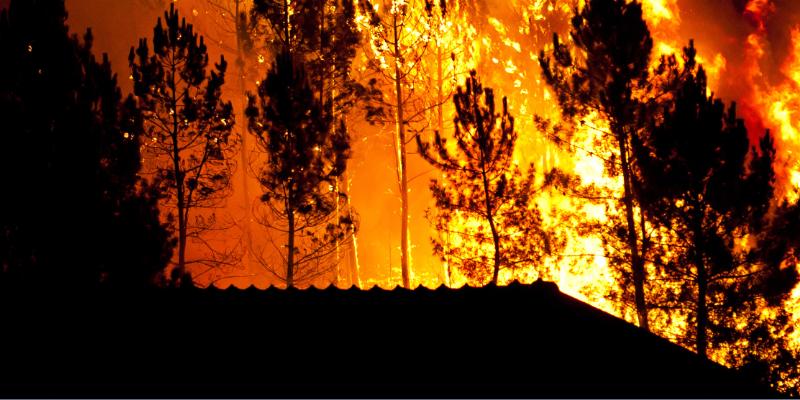Summer is here and as we prepare for the upcoming 4th of July holiday, many of us are a little uneasy about the possibility of wildfire. Now is the time to put that nervous energy to work in making our properties more fire-resistant and making plans to keep ourselves, our family, and our pets or livestock safe.
There are many things we can do to achieve wildfire preparedness, but it can become overwhelming. That is why the Clackamas Soil and Water Conservation District recommends undertaking this challenge in bite-sized chunks. For the next few weeks, we will share with you tasks that can make your home and property more fire-resistant.
According to Firewise USA and the National Fire Protection Association, we should look at our property in three separate zones. The immediate zone (0 to 5 feet from your home) is the first zone to tackle this weekend.
Wildfire Immediate Zone Checklist
Get your family involved and start on this list:
- Remove dead leaves, twigs, pine needles, and other flammable materials from your roof, gutters, under decks or porches, and in nooks and crannies around your home.
- Prune any tree branches away from your roof.
- Clean your vents and screened areas below decks and porches. Make sure the screens are wire with 1/8-inch mesh. This size will reduce the chance of embers entering your attic or getting under your home.
- Enclose your eaves or screen with 1/8-inch wire mesh to prevent embers from entering your home through vents.
- Inspect shingles or roof tiles. Replace missing or secure loose pieces to keep embers from getting under this layer. Also, cover the ends of tiles with bird stops or cement to prevent ember access.
• Repair or replace damaged or loose window screens and any broken windows. - Move construction material, trash, and woodpiles at least 30 feet from your home and outbuildings.
- If you have dead or dried plants, weeds, or grass within five feet of your home or outbuildings, remove them. If you allow your lawn to go dormant in the summer, mow it short. Always dispose of branches, leaves, pine needles, and grass clippings to reduce fuel for wildfire.
Just a side note, if you use an organic mulch or landscape bark near your home, keep it moist so embers cannot ignite the material. Another option is to consider non-flammable options like shells or rock.
Stay Tuned and Additional Resources
Check out these resources to learn more about the area and what actions to take to reduce your risk in this zone:
- Preparing Homes for Wildfire – get recommendations and download tip sheets (English and Spanish) to share with your family, friends, and neighbors.
- Immediate (noncombustible zone) wildfire research fact sheet – download this fact sheet and share far and wide with those in wildfire prone areas.
- Understanding the Wildfire Threat to Homes -This online learning module is an overview of fire history, fire basics, and how homes burn. The module can be completed in approximately 30 minutes and is available in English and Spanish.
We thank Firewise USA and the National Fire Protection Association for this timely and useful information.
In the coming weeks, we will look at the Intermediate Zone and Extended Zone for the tasks we need to tackle.


